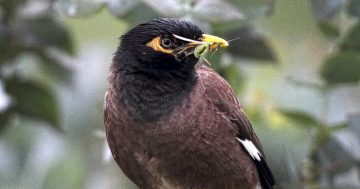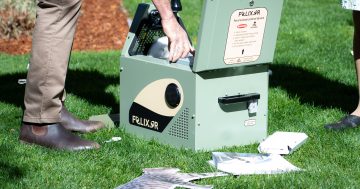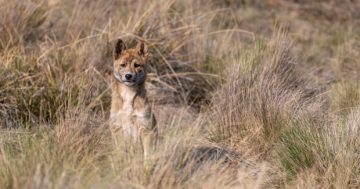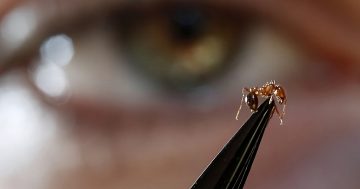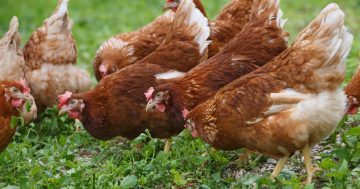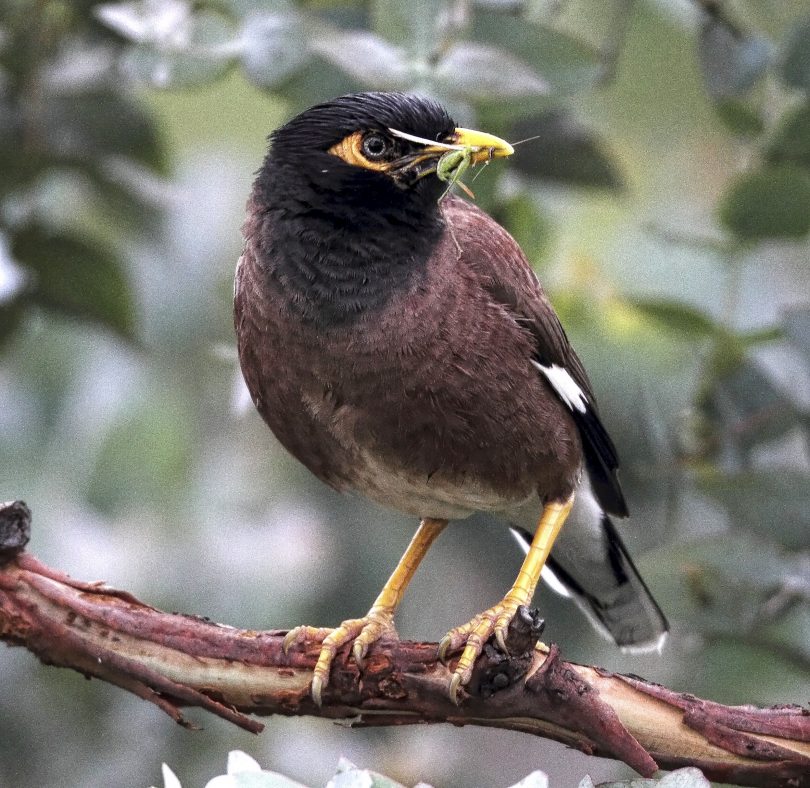
An Indian myna bird with its catch of the day. Photo: Supplied.
Indian myna bird numbers in the ACT are still a major problem, with a local action group saying the birds could do more damage to native wildlife than the cane toad and should be declared a pest.
After an already prolific breeding season which can see between 20 and 30 fledglings born per female between October and March, the Canberra Indian Myna Action Group is calling for people to get out their traps to reduce their numbers once again.
Canberra Indian Myna Action Group president Bill Handke said the success of previous trapping efforts had significantly reduced numbers of the introduced species related to the starling and is considered invasive to native birds and wildlife.
The Indian myna should not be confused with the native noisy miner which is predominantly grey with a black patch around the eye and on top of its head, while the Indian myna has a distinctive chocolate and black body, a yellow beak and legs and a white wing patch.
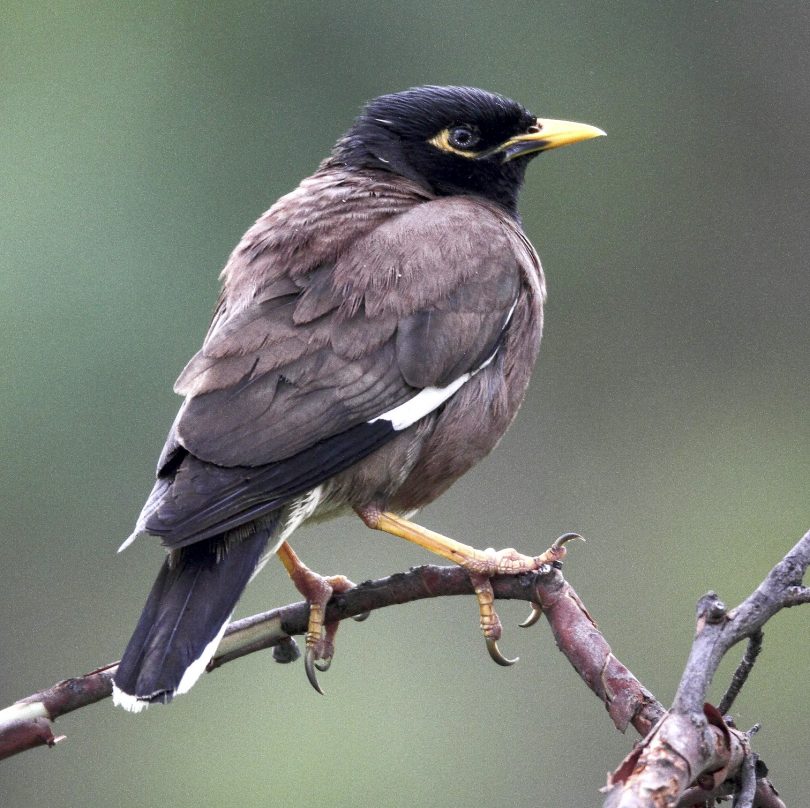
The Indian myna bird was brought to the ACT in 1968. Photo: Supplied.
Mr Handke said Canberrans may have become complacent after ACT residents humanely removed an estimated 100,000 birds since traps were introduced in 2006.
“Because the Indian myna lives close by in urban areas, people notice them and generally don’t like them and are encouraged to trap them,” he told Region Media. “It’s a good example of the community taking control of a pest animal.
“They’ve always been a problem, but it seems that people are seeing more of them again in hotspots such as shopping centres, horse paddocks and industrial areas where food scraps are readily available.”
Inmates from the Alexander Maconochie Centre had been making the traps but they are now part of community service orders. However, Mr Handke said more than 30 people are waiting for traps which are free of charge from the Canberra Indian Myna Action Group.
The ACT Government endorses the trapping and euthanasia program, which has seen many people reporting the return of small birds and rosellas to nesting boxes and tree hollows in backyards and along streets that had previously been occupied by Indian mynas.
However, the RSPCA says trapping and killing by community groups should not be encouraged and should only be carried out as part of a government-supervised control program, which includes clear guidelines on humane procedures.
Mr Handke said the Indian myna poses a potential health risk to humans from bird mites and faeces dust, due to its habit of closely associating with human activity such as scavenging at outdoor cafes and eating areas, and domestic patios where pet food is often left out.
Indian mynas arrived in Canberra in 1968 when a newcomer from Sydney released a dozen birds because he missed hearing their call. It is now estimated that there are some 250 Indian mynas per square kilometre in the urban area of Canberra or about 150,000 birds.
They seek out nesting hollows during breeding season, which they take over from native birds and animals, after harassing and evicting them. Indian mynas kill other birds’ chicks or destroy their eggs, or build their own nests on top and smother them.
“Myna numbers in the Canberra region were drastically reduced with intensive trapping by community members, but now show a slight rise, indicating there is no place for complacency,” Mr Handke said.
“They are now the 17th most common bird in Canberra, whereas they were the 3rd most common bird when we started in 2006.”
He said there is clear evidence for state and territory governments to declare Indian mynas a pest after an initial push for the ACT Government to declare them as a pest in 2016. A draft consultation plan was made in 2019 but is awaiting further debate.
The ACT Pest Animal Management Strategy 2012-2022 details the ACT Government’s approach.
“The International Union for the Conservation of Nature – a United Nations body – identifies mynas as one of only three birds on the list of the world’s most invasive species. The common starling is also on that list,” Mr Handke said.
“We believe the myna will end up doing more damage than the cane toad because it affects a broader range of animals such as birds, reptiles and insects. It’s already had a massive impact on eastern Australia.”
You can find more information about Indian mynas in the ACT on the Canberra Indian Myna Action Group website or Facebook group.












